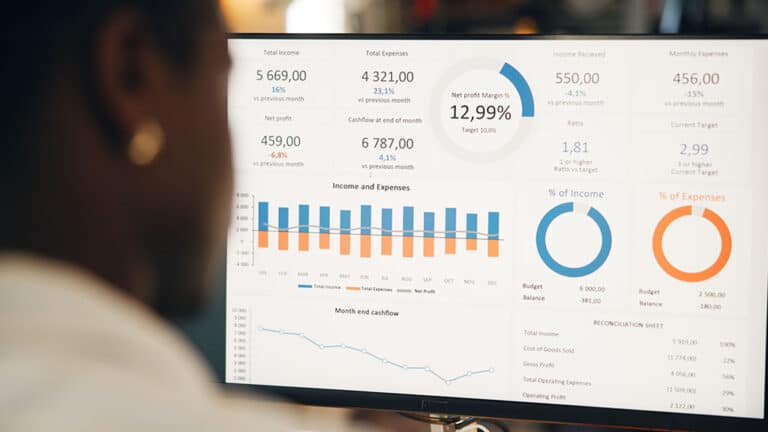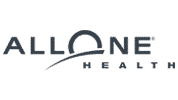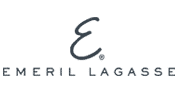Google Ads for Dentists: Best Practices to Attract Patients
In today’s competitive dental industry, standing out to attract new patients requires more than just traditional marketing methods. While word-of-mouth referrals and organic search rankings are essential, they can take time to generate results. Google Ads, powered by Pay-Per-Click (PPC) advertising, offers dentists a way to connect with potential patients who are actively searching for dental services online. By leveraging the right strategies, dentists can increase their visibility, drive more appointments, and ultimately grow their practices.
Google Ads is particularly effective for dentists because it targets high-intent users. These are individuals who are already searching for terms like “emergency dentist near me” or “teeth whitening services.” Unlike other forms of advertising, where you hope to capture the attention of your audience, PPC ensures your ads are placed directly in front of people ready to take action.
This guide explores the best practices for Google Ads campaigns tailored to dentists. By setting clear goals, using geotargeting to focus on local patients, and targeting high-intent keywords, dentists can maximize the effectiveness of their campaigns. With the right approach, and by leveraging expert PPC advertising services, dentists can ensure they’re making the most of their advertising budgets while reaching the right patients at the right time.
Set Clear Campaign Goals
The foundation of any successful Google Ads campaign lies in setting clear, measurable goals. Without a defined objective, it’s impossible to determine whether your efforts are effective or if you’re optimizing your budget effectively. For dentists, campaign goals typically focus on lead generation, appointment scheduling, or promoting specific services like Invisalign, teeth whitening, or dental implants.
When setting goals, be as specific as possible. Instead of aiming for a vague goal like “increase patient inquiries,” focus on measurable outcomes such as “generate 20 new consultation requests within the first month.” Specific goals allow you to track performance and make data-driven adjustments to improve your campaigns.
Additionally, align your Google Ads campaigns with your overall business strategy. For example, if your practice is looking to increase revenue from high-margin procedures, such as cosmetic dentistry, your campaigns should focus on promoting these services. Similarly, if you’re a new practice trying to build awareness in your area, your goal might be to drive as much local traffic as possible.
Once you’ve established your goals, determine which metrics you’ll track to measure success. Common key performance indicators (KPIs) for dentists include cost-per-lead (CPL), click-through rate (CTR), and conversion rate (the percentage of clicks that result in an appointment or inquiry). With clear goals and KPIs, you can ensure your campaigns remain focused and results-driven.
Target Local Patients with Geotargeting
For dental practices, most of your potential patients will come from your immediate local area. This makes geotargeting one of the most critical tools in your Google Ads arsenal. Geotargeting allows you to display your ads only to users within a specific geographic location, ensuring your budget is spent on people who are most likely to visit your practice.
Start by identifying the primary service area for your practice. For example, if your office is located in downtown Chicago, you might set a radius of 5-10 miles around your location to target nearby neighborhoods. You can also use zip code or city targeting to refine your reach further. This ensures that your ads are seen by users who are close enough to consider your practice as a convenient option.
Local searches often include phrases like “dentist near me” or “emergency dental care in [city].” By targeting these location-based keywords, you increase the likelihood of appearing in searches made by patients actively seeking dental services nearby. Additionally, you can use ad extensions like location extensions to display your address, a clickable link to Google Maps, and your phone number directly in the ad.
For practices offering specialized services, geotargeting can help you attract patients who are willing to travel for expert care. For instance, if you specialize in dental implants, you might expand your geotargeting to include nearby cities or suburbs where demand for this service is high.
Geotargeting not only improves the relevance of your ads but also ensures that your budget is used efficiently, focusing on the patients who are most likely to convert into appointments. By combining geotargeting with clear campaign goals, dentists can create highly effective Google Ads campaigns tailored to their local market.
Focus on High-Intent Keywords
High-intent keywords are the foundation of a successful Google Ads campaign for dentists. These are the search terms that indicate a user is actively looking for dental services and ready to take action. Unlike broad or informational queries, high-intent keywords attract prospective patients who are closer to making an appointment, ensuring your ads reach the most valuable audience.
For example, keywords like “emergency dentist near me,” “teeth whitening services in [city],” or “family dentist accepting new patients” signal a clear intent to find and book a dentist. In contrast, broad terms like “dentistry” or “dental tips” may bring in traffic but are unlikely to convert into actual appointments. Focusing on precise, service-specific keywords ensures your ads are aligned with what potential patients are searching for.
When selecting high-intent keywords, consider the services you want to prioritize. For example, if your practice specializes in Invisalign, keywords like “Invisalign provider in [city]” or “clear braces consultation” should be central to your campaigns. Tools like Google Keyword Planner or SEMrush can help you identify keywords with high search volume and moderate competition, allowing you to maximize visibility while keeping costs manageable.
Negative keywords are equally important. Adding terms like “free” or “DIY” as negative keywords ensures your ads won’t show up for searches that don’t align with your services, saving you money on irrelevant clicks.
By focusing on high-intent keywords, you can ensure your ads are shown to prospective patients who are most likely to convert, making your campaigns more efficient and cost-effective.
Create Compelling Ad Copy
Your ad copy plays a critical role in convincing potential patients to click on your ad. With only a few seconds to capture attention, your messaging needs to be clear, engaging, and focused on what sets your practice apart. For dentists, this often means emphasizing unique selling points like expertise, affordability, or convenience, while including a strong call to action.
Start by addressing the patient’s needs in your headline. For example, a headline like “Emergency Dentist Open Late in [City]” immediately communicates relevance and urgency for someone searching for same-day care. Similarly, phrases like “Affordable Teeth Whitening Services” or “Gentle Dental Care for the Whole Family” highlight specific benefits that may resonate with different patient groups.
Descriptions should build on the headline by providing additional details and emphasizing trust factors. Mentioning things like “Over 10 Years of Experience,” “5-Star Patient Reviews,” or “State-of-the-Art Technology” helps to establish credibility and reassure potential patients. For ads promoting specific services, highlight any promotions or unique offerings, such as “Free Invisalign Consultation” or “$99 New Patient Special – Exam, X-rays, and Cleaning.”
A strong call to action (CTA) is essential for driving clicks. Phrases like “Book Your Appointment Today,” “Call Now for Same-Day Availability,” or “Schedule Online in Minutes” create urgency and make it clear what the user should do next. Keep your messaging concise and action-oriented to maximize engagement.
Testing your ad copy is also important. A/B testing different headlines, CTAs, and descriptions can help you determine what resonates most with your audience. Regularly refining your copy ensures your ads remain compelling and effective over time.
Leverage Call-Only Campaigns
For many dental practices, phone calls are one of the most effective ways to generate new patient appointments. Call-only campaigns are specifically designed to drive phone calls rather than website visits, making them ideal for services like emergency dentistry, where patients often prefer to speak directly to an office for immediate assistance.
Call-only ads prominently display your phone number, along with a clear call-to-action encouraging users to call your practice. These ads bypass the need for users to navigate a website, streamlining the process and increasing the likelihood of conversion. For example, an ad might say, “Call Now for Emergency Dental Care – Open Late in [City].” This approach works particularly well for high-intent searches like “emergency dentist near me” or “same-day dental appointments.”
To get the most out of call-only campaigns, make sure your practice is prepared to handle incoming calls efficiently. Train your staff to respond promptly and professionally, and ensure that your phone lines are open during the advertised hours. If your practice offers extended or weekend hours, highlight this in your ad copy to attract patients who may need care outside of regular business hours.
Tracking call performance is essential for optimizing these campaigns. Use call tracking tools to monitor the number of calls generated, the duration of each call, and whether those calls result in booked appointments. This data helps you refine your targeting and messaging to improve results over time.
Call-only campaigns are a powerful tool for connecting directly with potential patients, providing a personalized touch that builds trust and encourages immediate action. By integrating these campaigns into your overall PPC strategy, you can ensure your practice stays accessible and responsive to patient needs.
Optimize Landing Pages for Conversions
A well-designed landing page is the cornerstone of converting clicks into appointments. When potential patients click on your Google Ads, they should land on a page that directly addresses their needs and makes it easy to take the next step. For dentists, optimizing landing pages means creating a user-friendly experience that highlights your services, builds trust, and encourages action.
Your landing page must align closely with the ad that brought the visitor there. If your ad promotes “Teeth Whitening Specials,” the landing page should prominently feature information about your whitening services, pricing, and any promotional offers. This consistency reassures visitors they’re in the right place and reduces the chance of them leaving without taking action.
Include key trust-building elements such as patient testimonials, before-and-after photos, and industry certifications. These help establish credibility and make patients feel more confident about choosing your practice. A strong headline, like “Brighten Your Smile Today – Professional Teeth Whitening in [City],” immediately grabs attention and sets the tone for the page.
Mobile optimization is also critical. Many patients search for dental services on their smartphones, so your landing page must load quickly, have a clean layout, and feature mobile-friendly forms. Ensure your “Book Now” or “Call Us” buttons are prominently displayed and easy to tap.
Keep the form short and simple, requiring only essential details like name, contact information, and preferred appointment date. Offering multiple contact options, such as online scheduling and a phone number, caters to different preferences and increases the likelihood of conversion. A seamless and optimized landing page can dramatically boost your campaign’s effectiveness and turn more visitors into loyal patients.
Use Ad Extensions to Enhance Visibility
Ad extensions are a simple yet powerful tool for improving your Google Ads performance. They provide additional information that makes your ad more informative and clickable, giving you an edge over competitors. For dentists, leveraging ad extensions is essential to attracting attention and driving action from potential patients.
Location extensions are particularly valuable for dental practices. These extensions display your address, link to Google Maps, and often include the distance from the user’s location. This makes it easy for nearby patients to find your office and get directions, especially when paired with “near me” searches like “dentist near me” or “emergency dental care in [city].”
Call extensions are another must-have for dentists. These extensions include a clickable phone number, allowing mobile users to call your office directly from the ad. For practices that rely on phone inquiries and appointments, call extensions streamline the patient’s journey and reduce friction.
Sitelink extensions help promote specific pages on your website, such as “Teeth Cleaning,” “Invisalign Consultations,” or “Meet Our Team.” By offering multiple links, you make it easier for users to find the information they’re looking for and encourage them to explore your services. Similarly, structured snippet extensions highlight key aspects of your practice, like “Services Offered: Cosmetic Dentistry, Family Dentistry, Emergency Care.”
Using ad extensions not only increases the visibility and functionality of your ads but also improves your click-through rate (CTR). Google rewards ads with high CTRs by boosting their quality score, which can lower your cost-per-click (CPC) and improve your overall campaign performance.
Monitor Campaign Performance and Adjust Regularly
Running a Google Ads campaign is not a one-time task. To ensure ongoing success, you must monitor performance regularly and make data-driven adjustments. PPC campaigns provide a wealth of metrics that help you evaluate what’s working and identify areas for improvement.
Start by tracking key performance indicators (KPIs) such as click-through rate (CTR), cost-per-click (CPC), conversion rate, and return on ad spend (ROAS). For dentists, conversions might include booked appointments, form submissions, or phone calls. By analyzing these metrics, you can determine which keywords, ads, and targeting strategies are delivering the best results.
A/B testing is a valuable tool for campaign optimization. Test different versions of your ad copy, headlines, and calls-to-action to see which variations perform better. For example, you might compare “Call Today for Same-Day Appointments” with “Schedule Your Free Consultation Now” to determine which drives more clicks and conversions.
Adjust your bidding strategy based on performance. If certain keywords consistently drive conversions at a low cost, consider increasing your bids to improve visibility. Conversely, pause or reduce bids for underperforming keywords to allocate your budget more effectively.
Regularly reviewing search term reports is also important. These reports show the actual queries triggering your ads, helping you refine your keyword list and add negative keywords to prevent irrelevant clicks.
By continuously monitoring and adjusting your campaigns, you can maximize your return on investment and ensure your ads remain effective in attracting new patients.
Use Remarketing to Re-Engage Prospective Patients
Not every patient will book an appointment on their first visit to your website. Some may browse your services, compare options, or leave without taking action. Remarketing campaigns allow you to re-engage these potential patients by showing them targeted ads after they’ve left your site, reminding them of your practice and encouraging them to return.
For dentists, remarketing is particularly effective in building trust and staying top-of-mind during the decision-making process. For example, if a user visited your “Teeth Whitening” page but didn’t schedule an appointment, you can serve them an ad with a message like, “Achieve a Brighter Smile – Book Your Whitening Appointment Today.” Pairing the ad with an incentive, such as a discount or free consultation, can further motivate them to take action.
Dynamic remarketing takes this a step further by personalizing ads based on the specific services users viewed. If someone explored your “Invisalign” page, they might see an ad showcasing before-and-after photos or patient testimonials. These tailored ads are more relevant and effective at converting undecided patients.
Segmenting your remarketing audience is crucial for success. For example, create separate campaigns for users who visited your contact page versus those who viewed informational pages. Tailor your messaging to their level of engagement and guide them closer to booking an appointment.
By leveraging remarketing, you can ensure that potential patients don’t forget about your practice, increasing the likelihood of turning interest into appointments. This strategy is an essential part of a comprehensive PPC campaign, helping you capture missed opportunities and grow your patient base.Ready to take your PPC campaigns to the next level? Contact Zen Agency today to discover how our expert PPC management services can help you drive targeted traffic, increase conversions, and maximize your ROI. Let’s turn your digital ads into measurable success!

















